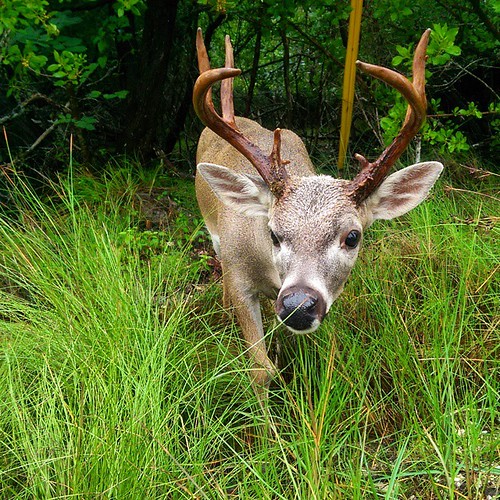The Key deer (Odocoileus virginianus clavium) is a subspecies of the white-tailed deer native to the Florida Keys. They are the smallest subspecies of white-tailed deer in North America and can be found nowhere else in the world. The largest bucks grow to less than a yard high at the shoulders and weigh about 80 pounds.
Physical Traits
Key deer are typically reddish-brown or grayish-brown in color. They have large ears, short legs, and a small tail with a black tip. Bucks have antlers that are usually forked, while does lack antlers altogether.
Life Span
In the wild, Key deer live up to 10 years on average, although some individuals may live longer. In captivity, they can live up to 20 years.
Habitat
Key deer inhabit Big Pine Key and other islands of the Lower Keys in Florida, where they find refuge in tropical hardwood hammocks and pine rocklands. They also use mangrove swamps and salt marshes as habitat during certain times of year.
Diet
Key deer feed primarily on grasses, sedges, herbs, shrubs, vines, fruit trees and aquatic plants such as manatee grass and shoalgrass. During dry periods they will also feed on leaves from hardwood trees such as gumbo limbo and poisonwood.
Reproduction
Mating season for Key deer occurs between November and January each year with peak activity occurring in December. Does give birth to one or two fawns after a gestation period of about 200 days. Fawns remain with their mother until they reach maturity at around one year old when they disperse into new territories or join existing herds of adults.
Conservation Status
The Key deer is listed as an endangered species under both state and federal law due to its limited range and declining population size due to human activities such as development of land for residential purposes and illegal hunting practices. The U.S Fish & Wildlife Service has established the National Key Deer Refuge on Big Pine Key which provides protection for this species by limiting access to areas inhabited by them as well as providing education programs about their conservation status .
Interesting Facts
The Key deer is believed to have arrived in the Florida Keys thousands of years ago via a natural land bridge connecting it with mainland Florida which has since been submerged underwater due to rising sea levels caused by global warming . Additionally , these animals are able to swim long distances between islands if necessary .
Sources:
- https://www.fws.gov/refuge/national-key-deer/
- https://www

